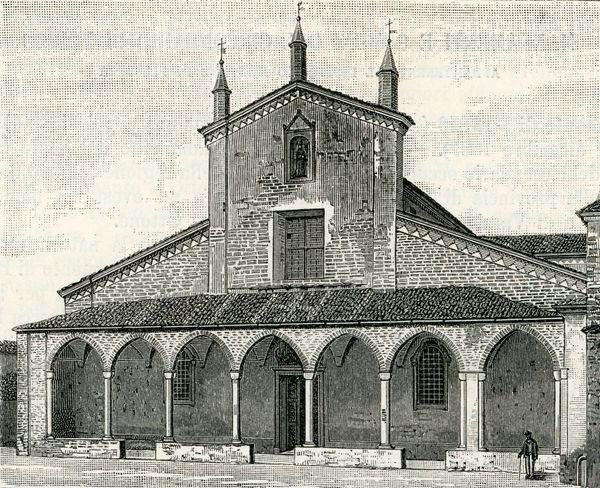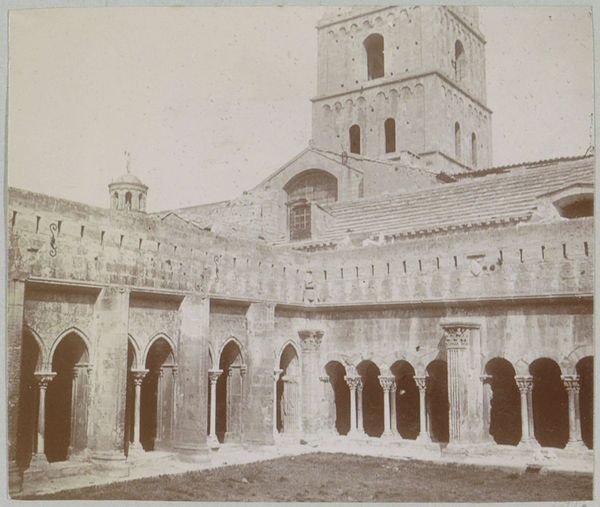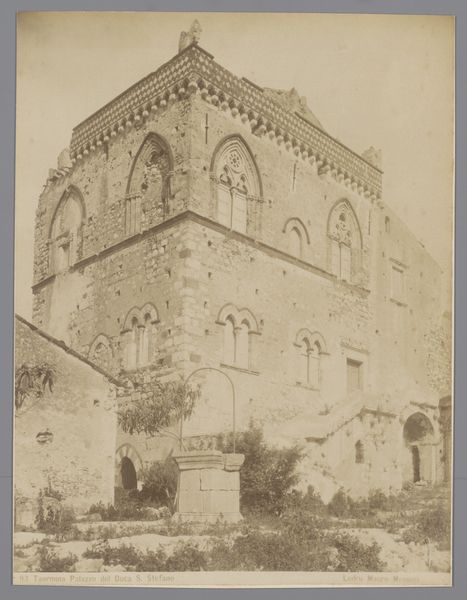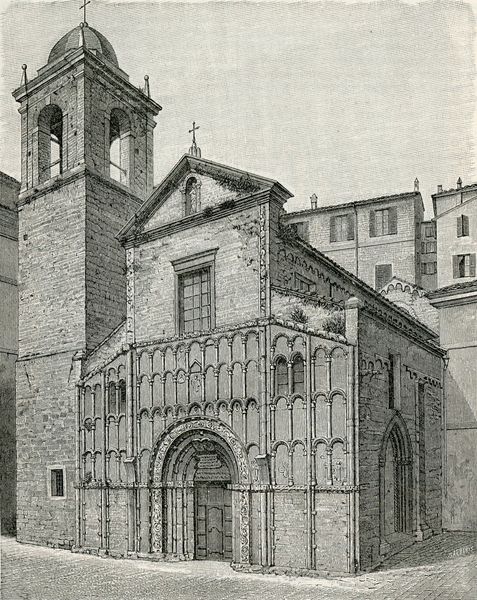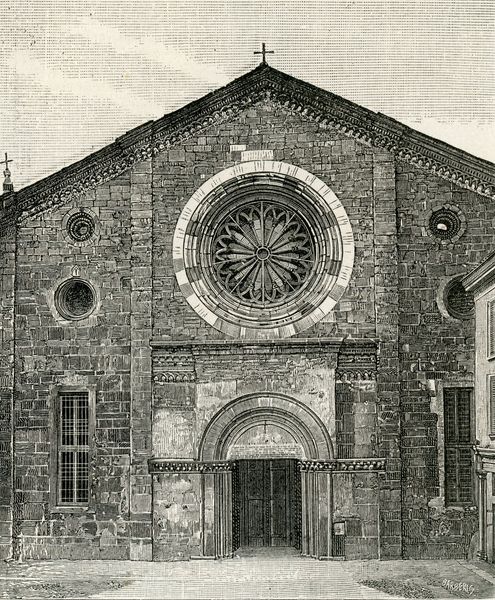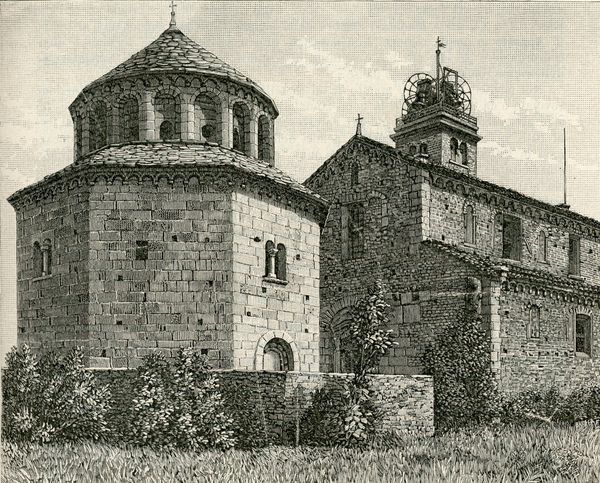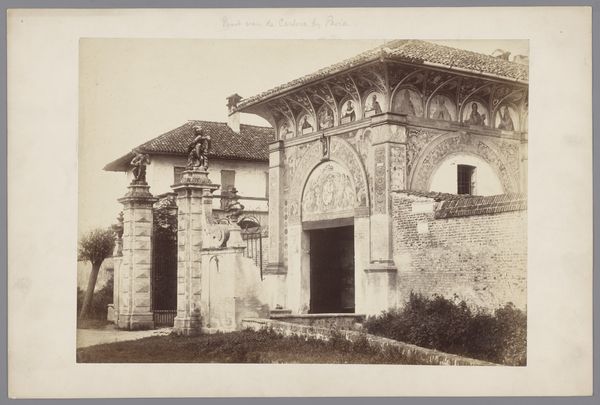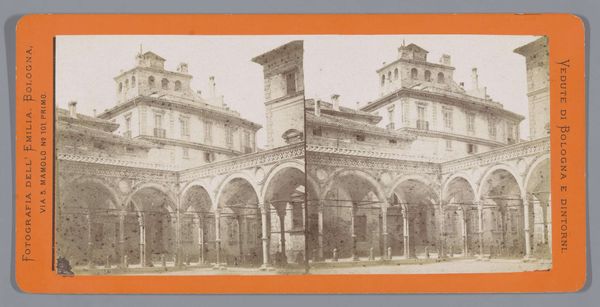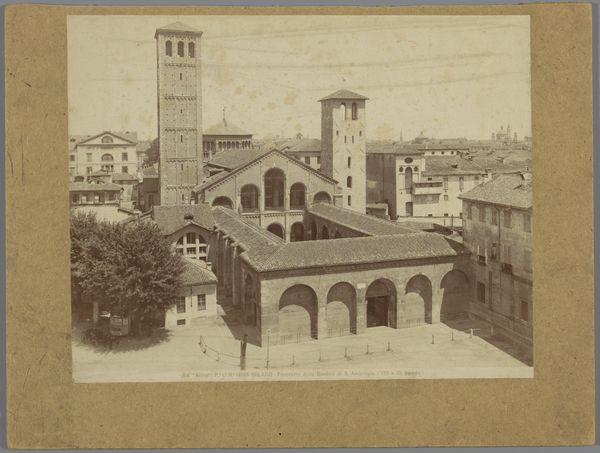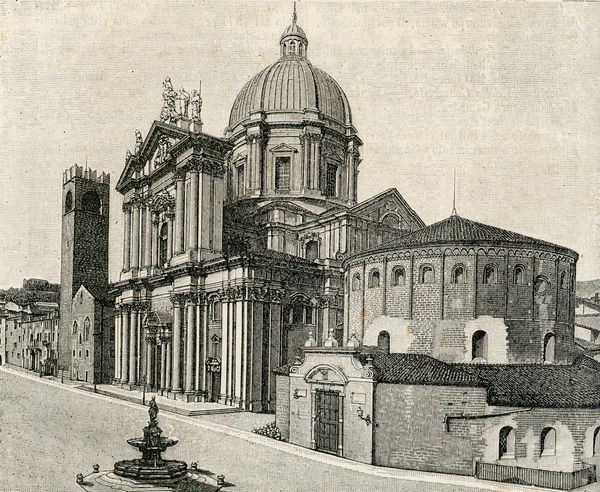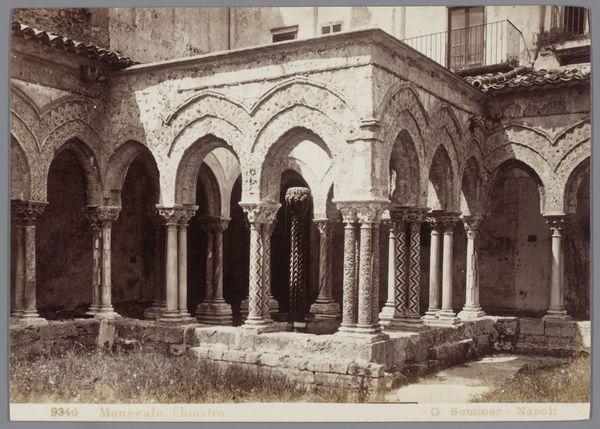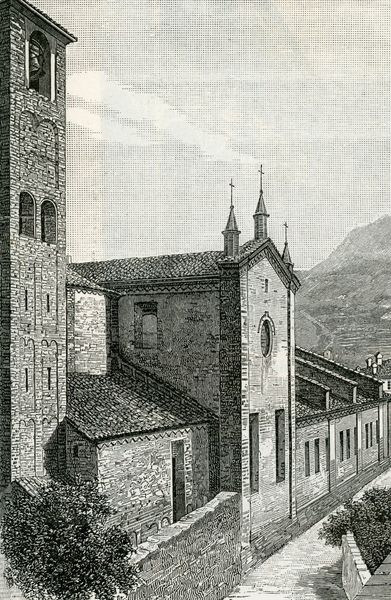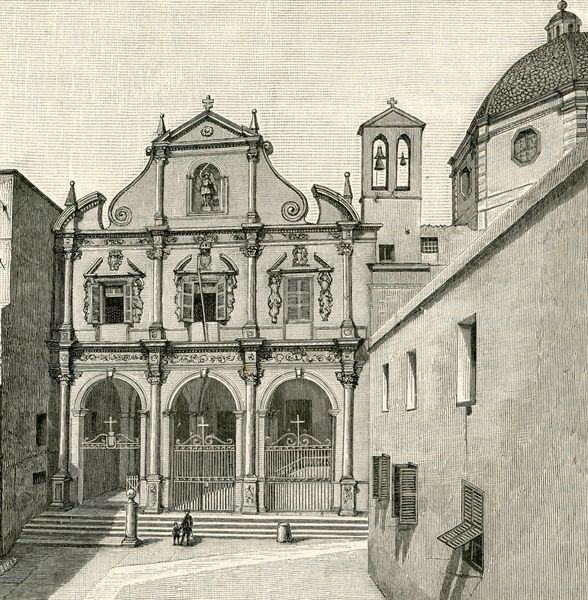
carving, architecture
#
medieval
#
carving
#
landscape
#
historic architecture
#
traditional architecture
#
romanesque
#
arch
#
architecture
Copyright: Public domain
The Romanesque architecture of Urgell Cathedral in Spain was constructed between approximately 1000 and 1250 AD, when bishops had secular as well as spiritual authority. The Cathedral’s visual language of rounded arches, thick walls, and small windows reflects the social conditions of its time, a need for fortification and protection. The Romanesque style, popular across Europe, signifies a period of relative stability and the consolidation of Christian power after the early medieval period. It became the seat of the Bishop of Urgell, a position that held significant political power in the region, including co-rule over Andorra. This meant its aesthetic was intertwined with the demonstration of power and authority in the region. To fully grasp the significance of structures like Urgell Cathedral, we need to look at architectural history, political documents, and religious texts. The meaning of art shifts depending on its social and institutional context.
Comments
No comments
Be the first to comment and join the conversation on the ultimate creative platform.
